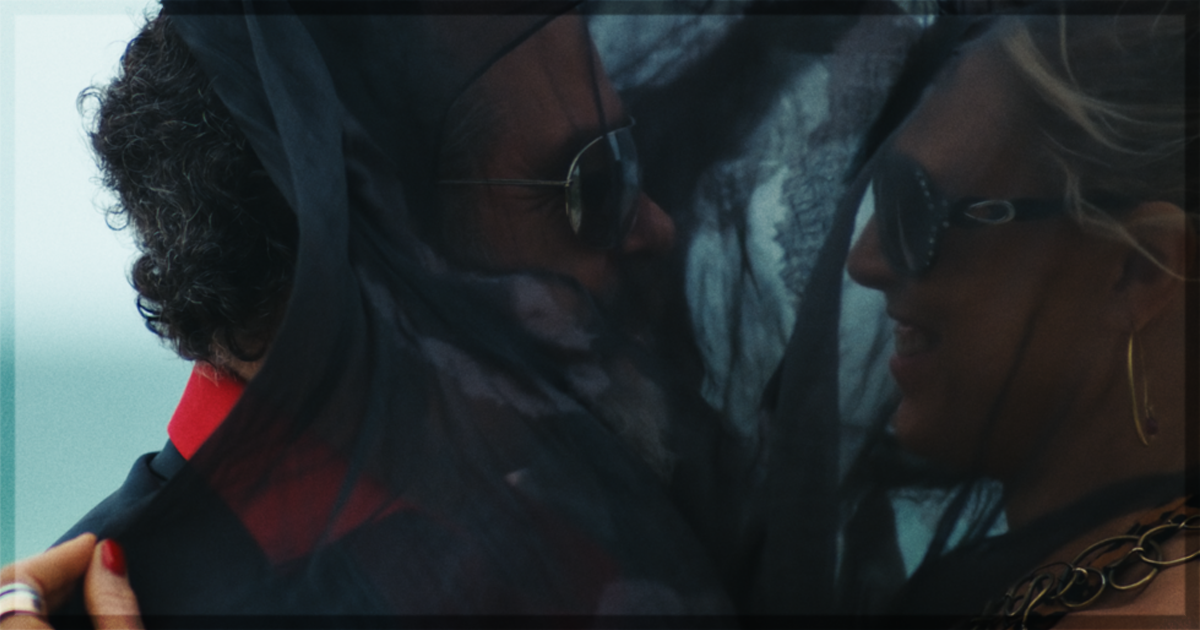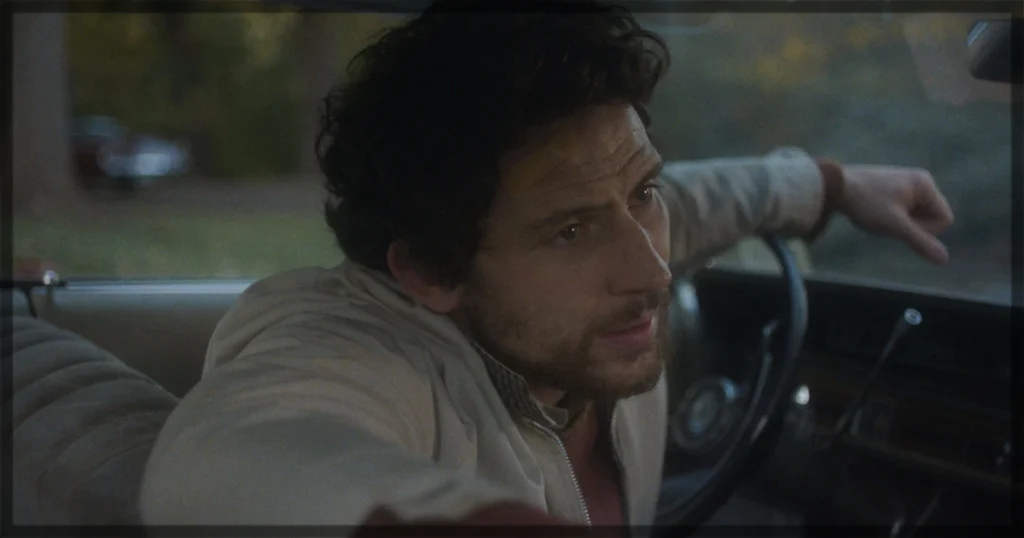Nearly a decade ago, American alternative artist and provocateur Joe Coleman painted a door-sized, hyper-detailed self-portrait titled “Doorway to Joe,” which reflects his personal lore, uninhibited fantasies and fetishes, and penchant for the divine and the profane. Later, he figured that the project called for a seven-foot companion portrait of his wife and muse, Whitney Ward. Aptly named “Doorway to Whitney,” Coleman spent four years completing the painting. This latest magnum opus from the art brut figure is at the center of How Dark My Love, the documentary film from writer-director Scott Gracheff, that just had its world premiere at the 2025 Tribeca Film Festival.
Clocking in at almost two hours, How Dark My Love is a diptych, doubling as an electric paean to American counterculture and a time-hopping portrait of Coleman’s controversial craft, the volatile histories that made it, and his colorful artistic and romantic relationship with Ward. As a painter, Coleman is infamous for his proclivities for both religious and historical figures, for saints and serial killers, for extraordinaires and outlaws. His portraits are organically alive, wonderfully bizarre and grotesque, drowning in pools of details and blocks of text. It only makes sense that every piece requires a whole lot of patience for each brushstroke to truly render his rawest intentions on the large canvas. Like the historical arcana that crowd his paintings, Coleman’s Brooklyn apartment and studio, called the “Odditorium,” is his own cabinet of curiosities, replete with strange wax figures, coffins, deformed creatures in jars, and all sorts of folkloric artifacts. “They all speak about the awe of what is life and what is death,” the artist says of the bizarre collection. “And they all have spirits. They have a voice, and they want to tell stories.” What’s more, in an old and rather funny interview for the promotion of his 1992 book Cosmic Retribution: The Infernal Art of Joe Coleman, the equally infamous Screw Magazine editor Al Goldstein describes Coleman as “despicable” and “vile.” “He inverts his soul. He vomits out his insides,” the editor says. “And what you sometimes see is unpalatable, smelly, nauseating, disgusting, repugnant. This artist is all of those things and less.”
The subject of his latest creative preoccupation is just as beguiling and peculiar. Ward is herself a prominent figure of the New York subculture. A photographer who religiously shot and tracked the punk-rock scene and burlesque culture in the 1970s, and a dominatrix who hosts a “perfect grownup playground” in her Manhattan dungeon. (Though married, the couple opt not to live together). “Doorway to Whitney,” as its title warrants, functions as a phantasmagorical gaze into Ward’s storied career and personal life. It runs the visual and emotional gamut, from the death of her mother to the dark yet tender love that she shared with Coleman over the years. At one point, Ward fixates on a particular section in the painting, featuring a girl, bruised and crying, which references the abuse that she suffered in a previous May-December romance. “It seems like this character contains all of the pain that I’ve had in my life. And the rest of it seems far more joyful,” she observes. At the same time, Ward reckons that the imposing piece is also an extension of Coleman’s sense of self, or at least his attempt to make sense of it. “As with every painting that he does, it’s a self-portrait in the end,” Whitney says, early into the movie.
Mixing archived low-res footage, old photographs and news clips with recent interviews, including those with filmmaker Asia Argento (who was Coleman’s director in the 2000 Italian drama film Scarlet Diva) and musician Iggy Pop (who later acquired Coleman’s unsettling portrait of notorious murderer Carl Panzram), Gracheff explores the histories that color every image and reference in the Whitney painting and expands on it as though he’s reenacting and bringing every detail back to life. Throughout the movie, Coleman returns to a museum gallery where his oeuvre is exhibited, reading the anecdotes he includes in his pieces, which then doubles as narration. The director draws parallels between Coleman’s ugly past, like his heroin addiction in the ‘80s (alongside his ex-wife), and his heightened obsession with the pathology of the morally bankrupt to make sense of his own.
There’s an unnerving moment in the movie, where the painter sits down with Sammy McBride, the former frontman of the punk-rock band Fang, who is now out of prison after murdering his girlfriend Dixie Lee Carney in 1989. During the conversation, Coleman says, “It is complicated. I mean, someone died.” Emphasis on the word “died,” instead of “murdered.” The Whitney painting features a portrait of Carney, with a text that reads, “Sam killed a part of himself yet survives.” I find this segment particularly off-putting as it erases some sense of politics and positionality, this constant fascination with the psychology of the killer as mere fuel for craft. I just don’t find any meaningful insight here that hasn’t already been exhausted by true crime dramas that increasingly populate our screens.
Past this, there are other plotlines in the documentary that simply promise a more nuanced picture. An hour into the movie, Gracheff draws focus to the 1998 New Yorker piece written by Paul Theroux about Ward and the dominatrix scene in New York that forced the so-called Nurse Wolf to go underground after a shocking moment in the spotlight, and prompted New Yorker editor Tina Brown to step down from the publication.
In many instances, How Dark My Love distracts from its central subject in its attempt to cover a lot of ground—narrative tangents that suffocate its emotional anchor more than enhance it. Gracheff shaped this documentary for 12 years, and the result is a genuinely weird, fascinating picture that unfortunately lacks a solid sense of direction to warrant a deeper payoff.
How Dark My Love recently played at the Tribeca Film Festival.
Learn more about the film at the Tribeca site for the title.


